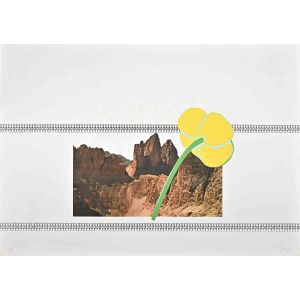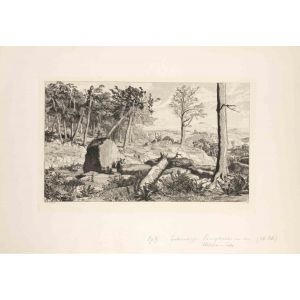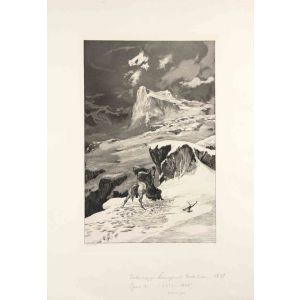Kyoka-Tokaido
Kyoka-Tokaido is an original modern artwork realized after Utagawa Hiroshige (1797 – 12 October 1858) in 1925.
Woodcut print Chuban Yokoe Format. Signed: Hiroshige ga. Reprint of 1925.
Reduced reprint of the series "Tokaido gojusan tsugi" (53rd station of Tokaido road) so called Kyoka-Tokaido from 1840. Carriers of a Daimyo arrive on a bridge in the Goyu station.
Good copy, bokashi, lightly browned, margins slightly creased, folds.
Kyoka-Tokaido is an original modern artwork realized after Utagawa Hiroshige (1797 – 12 October 1858) in 1925.
Woodcut print Chuban Yokoe Format. Signed: Hiroshige ga. Reprint of 1925.
Reduced reprint of the series "Tokaido gojusan tsugi" (53rd station of Tokaido road) so called Kyoka-Tokaido from 1840. Carriers of a Daimyo arrive on a bridge in the Goyu station.
Good copy, bokashi, lightly browned, margins slightly creased, folds.
Discover More Japanese Artworks On Wallector.com!
Utagawa Hiroshige, born Ando Hiroshige (1797 – 12 October 1858), was a Japanese ukiyo-e artist, considered the last great master of that tradition. Hiroshige is best known for his horizontal-format landscape series The Fifty-three Stations of the Tokaido and for his vertical-format landscape series One Hundred Famous Views of Edo. The subjects of his work were atypical of the ukiyo-e genre, whose typical focus was on beautiful women, popular actors, and other scenes of the urban pleasure districts of Japan's Edo period (1603–1868). The popular series Thirty-six Views of Mount Fuji by Hokusai was a strong influence on Hiroshige's choice of subject, though Hiroshige's approach was more poetic and ambient than Hokusai's bolder, more formal prints. Subtle use of color was essential in Hiroshige's prints, often printed with multiple impressions in the same area and with extensive use of bokashi (color gradation), both of which were rather labor-intensive techniques.











































Validate your login
Sign In
Create New Account